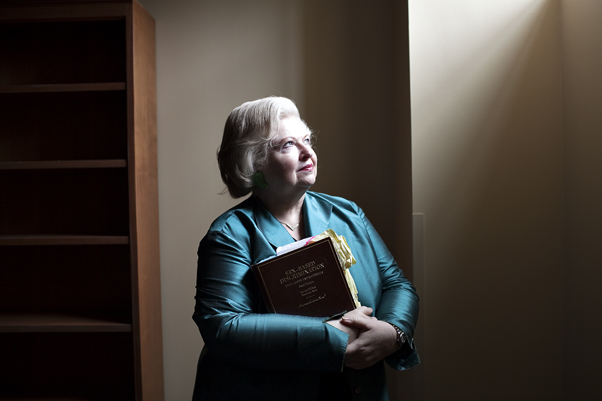Dr. Jane Hodgson’s medical license was on the line. As she drove to Florida in the pouring rain, she listened as Walter Cronkite’s voice came on the radio.
“In a landmark ruling, the Supreme Court today legalized abortions.”
Three years prior, Hodgson was approached by a 23-year-old mother with rubella. Fearing birth defects, Hodgson performed an abortion, becoming the first and only person in the U.S. convicted of performing the procedure in a hospital.
Following the ruling, she phoned Sarah Weddington’s office.
“[Hodgson] said it was raining cats and dogs, but when she heard the decision on the radio, she was crying harder than it was raining,” Weddington said. “The Supreme Court’s decisions are like lightning. When they made their decision, it was instantaneous.”
At 27 years old, Weddington became the youngest person to argue a successful Supreme Court case. It wouldn’t be her last achievement. Later, she served as both the first female Texas representative and U.S. General Counsel of the Department of Agriculture. But before all of this, she wanted to be a teacher.
“I thought I was going to teach eighth graders to love ‘Beowulf,’” Weddington said. “But once I tried it, it didn’t work out so well. So I went to the Dean of Students at McMurry University and told him I was thinking about law school, and he said ‘You can’t go to law school. No woman from this college has ever gone to law school.’ So of course that’s when I decided I was going.”
When Weddington arrived at UT in 1964, she was one of five women in her class of 120. Though she said most of her male classmates were respectful, she still faced discrimination.
“When I got to law school, [Professor Alan Wright] refused to let women in his class,” Weddington said. “Then he changed it to let us sit in his class but wouldn’t call on us. Eventually he would, but with him and with others, it was a gradual getting used to us.”
When she began looking for work, one firm in Dallas told her she would make a good lawyer, but they had concerns about her gender.
“They kept saying things like, ‘You’ll hear cuss words,’ or ‘Our wives aren’t sure they want women partners around,’” Weddington said. “They told me I’d have to work late, which I’d certainly done before. I didn’t get the position, but some of my male colleagues did."
Back on campus, Weddington and her friends joined the women’s liberation movement. At that time, abortions were illegal in Texas and unmarried students couldn’t get birth control from UT’s health center. Weddington researched abortion law while friends like now-professor Barbara Hines helped women looking for birth control.
When women approached them seeking abortions, they referred them to a doctor in Mexico. Weddington knew what it was like to have to travel over 200 miles for an abortion — she had made the trip her third year of law school.
“I was lucky,” Weddington said. “I had the money because I worked three jobs.”
Her friends worried they’d be prosecuted for aiding and abetting an offense. Their fears weren’t unfounded; Hines later found out she had been under FBI surveillance.
The group grew tired of operating underground and approached Weddington, wanting to file a lawsuit challenging Texas’ laws.
“I had never tried a case in federal court, but I was the only one who would do it for free,” Weddington said.
Weddington searched for plaintiffs until a friend referred Norma McCorvey, a 21-year-old looking for an abortion.
Their case made it to the fifth circuit, where a federal judge ruled in their favor, but the case was soon appealed to the Supreme Court.
The day Weddington appeared before the Supreme Court the judges heard arguments from three female lawyers. Weddington said they declared it “Women’s Day.” Months later, Weddington received a telegram alerting her that she had won the case.
“I was in law school on the day it was decided and I thought ‘Wow, we’ve won this battle and now we can move on to the next one,’ I never imagined we would be where we are today,” Hines said. “It feels very depressing. But, I have faith that women are going to fight back.”





















